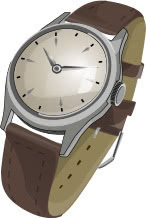ZTE Eyes Wearable Devices, TCL Targets TD-LTE

We’re getting a glimpse of where future priorities may lie for smartphone makers ZTE (HKEx: 763; Shenzhen: 000063) and TCL Communications (HKEx: 2618; Shenzhen: 000100), with the former hinting at a move into wearable devices and the latter placing big bets on China’s homegrown 4G technology called TD-LTE. ZTE isn’t exactly known for setting new market trends, but I would certainly like its decision to test its luck in wearable devices like wrist watches and glasses sooner rather than later. Meantime, TCL’s TD-LTE gambit looks like a 50-50 bet to me, as this notoriously boom-bust company tries to find a sustainable formula for success.
Let’s begin our gadget round-up with a look at ZTE, which has just reported its latest results that include its biggest quarterly profit in 2 years. (company announcement; English article) The company posted a profit of 1.36 billion yuan ($220 million) for 2013, reversing its first-ever annual loss the previous year as it struggled with slowing growth and weak margins in its core networking equipment business. Within that figure, the company also posted a fourth-quarter profit of 806 million yuan.
I have to compliment ZTE on the turnaround, which included a painful overhaul of its operations to scale back some of its less profitable business in developing markets. As a result of that retrenchment, the company’s revenue actually fell 11 percent last year to 75 billion yuan. ZTE should return to revenue growth this year with expected big new sales to China’s big 3 telcos as they build up new networks after recently receiving 4G licenses. It should also see steady growth in its newer smartphone business, though I do expect that margins in that area will be extremely thin due to stiff competition.
But what most piqued my interest was ZTE’s statement that wearable devices will “present a new direction of development”. (company announcement) Global giants Google (Nasdaq: GOOG), Apple (Nasdaq: AAPL) and Samsung (Seoul: 005930) have all experimented with such devices, mostly glasses and watches, though none has found much success yet. While I have doubts that ZTE will be able to succeed where these other companies have struggled, I’m at least encouraged that it’s trying to be more proactive and look forward to seeing its first attempt to enter the space this year.
From ZTE let’s turn to TCL, which is trying to build on recent momentum that saw it return to profitability last year after posting a loss in 2012. The company has established a problematic boom-bust pattern of discovering formulas for success, but then failing to repeat those formulas over the longer term for its cellphone business.
According to the latest reports, TCL will roll out an impressive 20 smartphone models this year for TD-LTE, the homegrown Chinese technology being used in new networks from leading telco China Mobile (HKEx: 941; NYSE: CHL) and smaller rival China Unicom (HKEx: 762; NYSE: CHU). (Chinese article) Other major handset makers are also rolling out TD-LTE models, though most have limited their efforts as they wait to see how the market develops.
I should praise TCL for taking such a big risk, which could yield big rewards if TD-LTE gains quick momentum. China Mobile is aiming to sign up 50 million TD-LTE subscribers this year, and perhaps Unicom could sign up another 5-10 million, translating to up to 60 million handset sales. A few other global companies are also building TD-LTE networks, meaning the market could be as big as 100 million handsets this year. Even a tenth of those sale would equate to nearly 1 percent of the global smartphone market, which wouldn’t be bad for a company like TCL. But we’ll have to wait and see if consumers like its new models, and whether TD-LTE gains any major momentum this year.
Bottom line: ZTE should be commended for its early entry to wearable devices if it tries out the space, while TCL’s gamble on TD-LTE could have a 50-50 chance of success.
Related posts:
